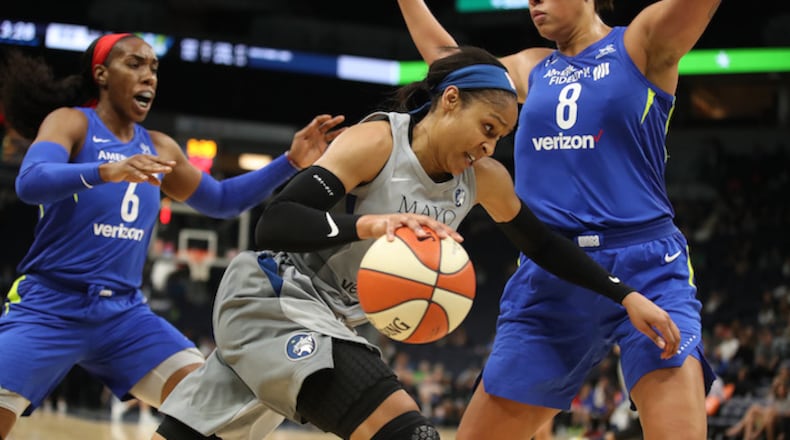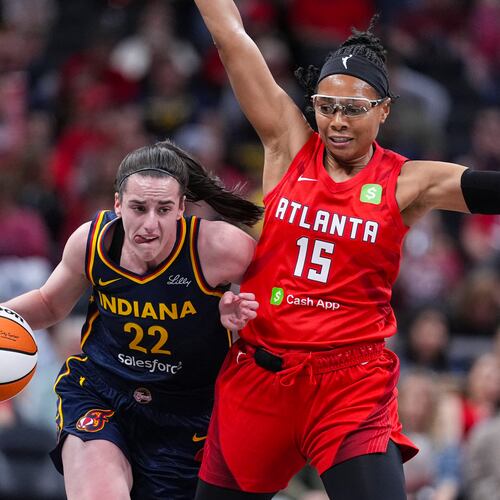As the Dallas Wings sat at Dallas-Fort Worth Airport on June 18, waiting for their flight to Minnesota to face the Lynx, a conversation with her teammates spurred center Liz Cambage to take to Twitter.
"Today I learnt NBA refs make more than a WNBA player and the 12th man on a NBA makes more than a WHOLE WNBA team," she tweeted. "Not sure if I want a sex change or a career change right now.
"It's (quite) frustrating going to bed most nights knowing that if I was born with a penis I would be entitled to so much more in life. But ... I love being a woman I will never stop fighting for my sisters."
The conversation around the gender pay disparity in basketball has picked up steam in recent months. It mirrors a similar societal movement as women demand equal treatment and compensation in the workplace.
As Cambage pointed out, while a WNBA player's maximum salary is $115,000 for those who have been in the league six years, entry-level NBA referees earn $150,000. The average salary for WNBA players is around $79,000.
"I don't know how much traction we're really getting with these conversations," said Wings guard Skylar Diggins-Smith, who has been a vocal advocate for equal pay for women in basketball. "They may be coming up and causing conversations but what's actually happening (to change), I don't know the numbers."
The important thing to note here is that WNBA players are not asking for $200 million contracts to match their male counterparts in the NBA. They understand that a variety of factors, from the NBA's larger schedule to television deals and sponsorships, makes that an unreasonable position to take.
Instead, the argument comes down to the cut of league revenue that WNBA players receive.
Forbes studied available data for WNBA revenue in 2017. This included the $25 million broadcast deal with ESPN and a minimum of $26.5 million from the gate, using only the minimum ticket prices to determine this figure.
While the WNBA brought in at least $51.5 million, the players _ with their average salaries of $75,000 _ earned $11,775,000 combined.
That comes out to 22.8 percent of league revenue for the players. NBA players earn 49-51 percent of league revenue annually.
That 22.8 percent is the maximum estimate of what WNBA players earn, too. Because the league does not disclose its annual revenue, Forbes speculates that it is very likely that players receive an even lower cut.
"I was even surprised hearing that number. That's information I just found out, being in the league six years," Diggins-Smith said. "We're not even talking about $200 million salaries or anything like that. It's just off the revenue that we bring in. Getting that same percentage (as NBA players), and not even getting half of that is kind of appalling. It's staggering."
She added, "I think a lot of people try to hijack the narrative that we're trying to talk about. That's a fact. It's not anything we're making up. We've earned everything that we've gotten. We've earned the right to play in this league. It's not like, 'Just be grateful that you're just in it.' "
The issue could come to a head following the 2019 season. That's when the Women's National Basketball Players Association (WNBPA) can opt out of the current collective bargaining agreement and begin negotiating a new one.
"All 144 players have a seat at the table at this next collective bargaining agreement," Diggins-Smith said. "I think it's just about us prioritizing and getting this information out to us in layman's terms and just continuing to be advocates for women, women's rights and gender parity."
About the Author
Keep Reading
The Latest
Featured


